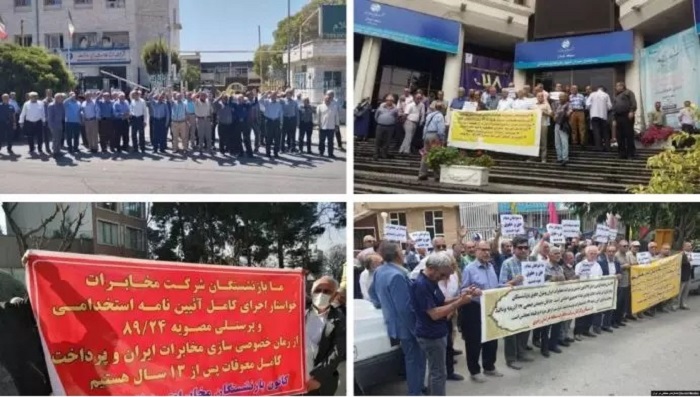
The water crisis in this northwestern Iranian city has persisted for two weeks, with East Azerbaijan province – a significant watershed region – being the worst affected.
Local informants report that approximately a dozen Tabriz neighborhoods are grappling with severe water shortages. In various localities like Erem, Nasr, and Marzdaran, water supply has either been entirely disconnected or is provided at such low pressures that it’s barely accessible.
Regrettably, this is not an isolated incident. The challenge of drought has been gnawing at Iran’s roots for years now. Due to this prolonged water crisis, coupled with lackluster water management strategies that now affect vast tracts of Iran, many have taken their grievances to the streets. Only last week, cities like Zabol and Divandarreh witnessed massive protests, where citizens voiced their discontent over the government’s inability to provide something as fundamental as water.
August 6—Tabriz, northwest #Iran
Locals hold protests and block roads as they have been facing water outages for one week.#IranProtestspic.twitter.com/OHlzgKpyoZ— People's Mojahedin Organization of Iran (PMOI/MEK) (@Mojahedineng) August 6, 2023
However, water shortages aren’t the only gripe of the Iranian populace. Mounting economic challenges, spurred by the regime’s policies, have sparked protests across various sectors.
In a poignant display of despair, pensioners of the regime’s Social Security Organization, many of whom are war veterans, staged rallies across cities like Kermanshah, Ahvaz, and Dezful. Their cries resonate with a painful truth: while the cost of basic commodities has skyrocketed, their pensions remain static, trapped in an earlier era of economic stability.
July 31—Divandarreh, western #Iran
Locals hold large rally in protest to the constant water outages that have lasted for several days.#IranProtestspic.twitter.com/AWJm0HOfY6— People's Mojahedin Organization of Iran (PMOI/MEK) (@Mojahedineng) August 1, 2023
In Shushtar, heart-wrenching slogans like “Yesterday’s soldiers are today’s hungry!” echoed across the streets. Despite the Social Security Organization’s commitment to look after their needs, these brave souls now have to fight a different battle – a battle for basic sustenance.
Across other cities, retirees from the telecom sector have resumed their weekly protests, a battle they’ve been waging for over 13 years. Demands center around a decade-old law mandating adjusted pensions, but, like many pleas before, these cries fall on deaf ears.
Protests by retirees in Shush.
Protesters chanting, "Yesterday's soldiers are today's hungry!"
Protesters are also chanting slogans against Mirhashem Mousavi, the CEO of the Social Security Organization.pic.twitter.com/ZRa72bzMSB— People's Mojahedin Organization of Iran (PMOI/MEK) (@Mojahedineng) August 6, 2023
The telecom protests also witnessed explicit dissent against Majid Soltani, the current CEO of the state-run telecom company, accusing him and other regime-linked shareholders of financial profiteering.
Meanwhile, in other parts of the country, protests sprung up against fraudulent practices by regime-affiliated companies. In Bandar Abbas, cheated customers of the Bahman Khodro car company rallied against undelivered purchases.
August 7—Bandar Abbas, southern #Iran
Protest rally by the defrauded customers of the state-run Behnam Khodro car company.#IranProtestspic.twitter.com/QBXnYt0bCs— People's Mojahedin Organization of Iran (PMOI/MEK) (@Mojahedineng) August 7, 2023
Workers in Borujerd’s textile sector struck against the unjust firing of colleagues and unpaid wages. Tabriz saw homebuyers demanding accountability for homes paid for, but undelivered for over a decade.
Across these protests, a common theme emerges: a plea for transparency, justice, and an end to the oppressive regime’s destructive policies.

MEK Iran (follow us on Twitter and Facebook), Maryam Rajavi’s on her site, Twitter & Facebook, NCRI (Twitter & Facebook), and People’s Mojahedin Organization of Iran – MEK IRAN – YouTu







